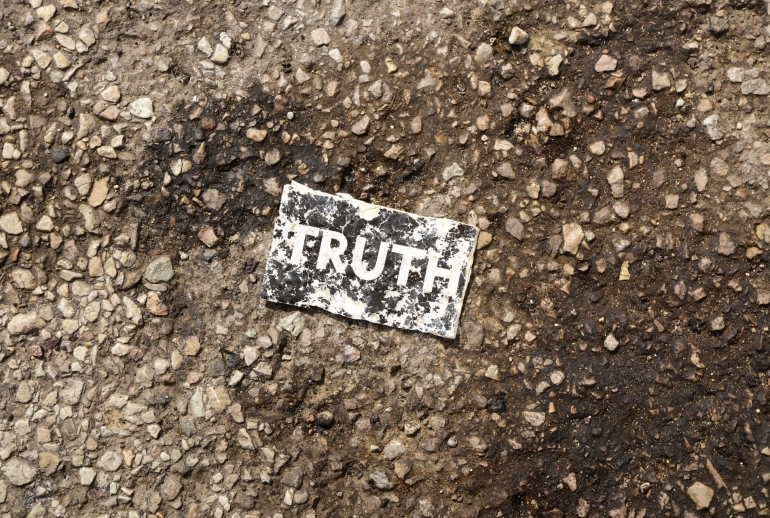The first thing I noticed upon picking up a copy of this book was praise for the author, Michael Lewis, on the back cover. “I would read an 800-page history of the stapler,” John Williams says, “if he wrote it.” Very droll, I thought.
Then I read The Premonition. I, too, would read an 800-page history of the stapler if Michael Lewis wrote it. Heck, I’d read a 1000-page history of the stapler. It’s that good. And I would happily irritate all my friends by insisting they read it, too.
Michael Lewis is a superb storyteller, and the story he tells in The Premonition is not just fascinating, it’s important. It tells us something important about science, about infectious disease, and about America’s public health response to the COVID-19 pandemic. What’s certain is that infectious disease will continue to be a serious problem; what’s uncertain is whether we as a people are willing to respond adequately for the common good.
The Premonition is a history of the pandemic, but not the history I was expecting. Lewis does not provide a timeline of COVID-19 from the outbreak in Wuhan to the present. Instead, he takes us behind the scenes, beginning before the pandemic begins, introducing us to a series of remarkable individuals who think outside the box and make discoveries and develop ideas that advance medical science. It is a story of dogged tenacity in people who believe it’s possible to distinguish between fact and opinion, between science and politics, and who won’t give up when their proposals are ignored because they challenge long held theories. It’s a story of creativity in medicine, and how science done well opens the door to so much that is beautiful and good in our disease-infested, fallen world that still reflects God’s orderly word in creation.
Lewis introduces us, for example, to Charity Dean, MD, a county public health officer in California, who is willing to act when people’s health and lives are at stake, even when superiors urge her to wait for more certainty. The problem is that certainty in infectious disease is possible only after people sicken and die. Dean wants to save those lives, and that’s what she has been hired as a public health officer to do. There is Joe DeRisi, who developed in his lab at the University of California-San Francisco a machine that can identify pathogens in a sample of infected tissue within a few hours—a process that had previously taken weeks to accomplish. It’s a breakthrough that revolutionizes the fight against infectious disease. There is Carter Mecher, whose mind is capable, somehow, of synthesizing complex issues involving huge amounts of data that allow decision makers to understand the bigger picture. Which is essential in pandemics when information is flowing in from across the globe. We meet Bob Glass, a scientist at Sandia National Laboratory in Albuquerque, New Mexico. He passed his love of science on to his daughter, Laura, whose high school science fair project launched a multi-year study by Glass and other scientists that resulted in demonstrating that epidemics could be contained by quickly enforcing social distancing and school closures.
Two months after the CDC published its new pandemic strategy, Laura Glass, now sixteen years old, returned to Washington, DC, for her final science competition. The Young Epidemiology Scholars Competition, this new contest was called. Her mom had somehow found out about it and suggested she enter her science fair project and make a trip of it. On her giant foam boards, she’d honed her mission statement. “Could the oldest of strategies, social distancing, be designed to target specific age groups and zones of high infectious contact within a social contact network and thus limit the spread of disease?” she’d written. On her boards, she walked the science fair judges through all the work she had done. She explained the computer model she had helped to build, the surveys she’d done of the citizens of Albuquerque, New Mexico, and the insights that her work had led to, with the help of the model. “I found that if schools are closed AND preschoolers, children and teens are restricted to the home epidemics that would have infected 65% of the population COULD BE REDUCED BY NEARLY 80%,” she wrote. “If adults also restrict their contacts within non-essential work environments epidemics from such highly infective strains can be ENTIRELY THWARTED!”
Somehow they didn’t give her a prize… A year later, she went off to college and decided that she belonged less in science than in the humanities. By then science perhaps didn’t need her as much: the insights at the heart of her project had become the official policy of the United States government, and were spreading rapidly from the CDC to the rest of the world. [p. 110-111]
And we meet others, all equally interesting, all simply doing what they love doing, which is science, medicine, computer modeling, research, and math. Viewed theologically, The Premonition is a celebration of what it means to be creative, made in God’s image in a world created by God, and full of determination for truth and the common good.
Besides the stories of people and scientific discoveries I’d never heard about, learning more about the effective containment of infectious disease is my take-away from The Premonition. Infectious disease has plagued humanity throughout history. Polio was stalking children in America when I was in elementary school. The Black Plague swept through the cities of Europe in regular cycles over millennia. Research shows that pandemics can be stopped by two things: achieving herd immunity through vaccination and using public health measures of social distancing of various sorts to contain the virus in the early days of the outbreak before it has a chance to spread too widely. The fact that both these approaches are being thwarted by so many is a tragedy.
Fighting infectious disease to save lives is an inherently risky enterprise. The reason is that if you wait until you know for certain what a virus is like and that an epidemic is underway, your efforts to contain it will be too late and not nearly as effective. But if you take the risk and intervene early, and then the epidemic doesn’t unfold as you feared, not only will your job and reputation be on the line, but other public health officials who see your crucifixion in the media will likely hesitate when they should act—and people will die who could have been spared. And officials do hesitate, because new discoveries and ideas always include a measure of risk—it’s safer to order more testing, more research to be certain, and then act. And when politics and social media is inserted into the mix, the difficulties escalate.
In the course of telling his story, Lewis introduces us to dedicated public health officers who take their job seriously. And their job, established by law, includes doing whatever is necessary, based on the best medical knowledge at the time, to stop infectious disease from wasting the population under their jurisdiction. Pushing back against such professionals trying to do their job is unfortunate, especially when done by Christians. Public health officials, after all, have the common good written into their job descriptions—a value that followers of Jesus should cherish and support. Even when mistakes are made, these are people who deserve our respect and support to do their work well.
One friend, when needing to don a mask during the pandemic said, “This is Marxist!” I will assume my friend isn’t making a philosophical point from Marxist theory, and instead is claiming this public health mandate is a form of tyranny, where he is being coerced by the State to do something he doesn’t want to do. Really? This is Marxist? This politicized rhetoric is a slap in the face of the millions who suffered so horribly under Marxist regimes.
This view of “tyranny” is related to a popular but unbiblical understanding of freedom. The common view of freedom in America is that the individual is free when they can choose without coercion from outside, especially from the State. In this view, as William Cavanaugh says, “Freedom itself is pursuing whatever you want without interference from others.” [Being Consumed (2008) p. 4.] The biblical understanding of freedom, in sharp contrast, is the freedom to do what is right, even at personal cost. And I believe Christianity provides rich resources to help me live free, including being in Christ; the accountability and encouragement of the body of Christ of which I am a member; the indwelling Spirit; grace that removes my choice from the reign of legalism. In this view, a coercive mandate from public health officials is transformed into obedience to God for his glory and the common good. Donning a mask isn’t tyranny but an opportunity to demonstrate a freedom far more compelling and substantive than to insist that I do whatever I want regardless of the consequences.
The Premonition is a science page-turner. Well written, compelling, carefully researched, and full of surprising moments of humor, it tells the story of what could have been but wasn’t. It is both a sad story (people sickened and died needlessly as the CDC accepted new ideas too slowly) and a happy one (smart people thought in new ways and made discoveries that saved lives and advanced medical science).
I doubt the story Michael Lewis tells in The Premonition will change many minds. The “don’t tell me what to do” view of freedom is deeply embedded in people’s imaginations—sadly, even among Christians—and only revival and reformation can change that. Still, learning from this story now can help. We can know with certainty that other pandemics will occur. Infectious disease is part of the fallenness of our world. The only unknowns are when the outbreaks will occur, and whether we will be prepared.
Book recommended: The Premonition: A Pandemic Story by Michael Lewis (New York, NY: W. W. Norton & Company; 2021) 301 pages.
Photo credit: Photo taken by the author with his trusty iPhone.



